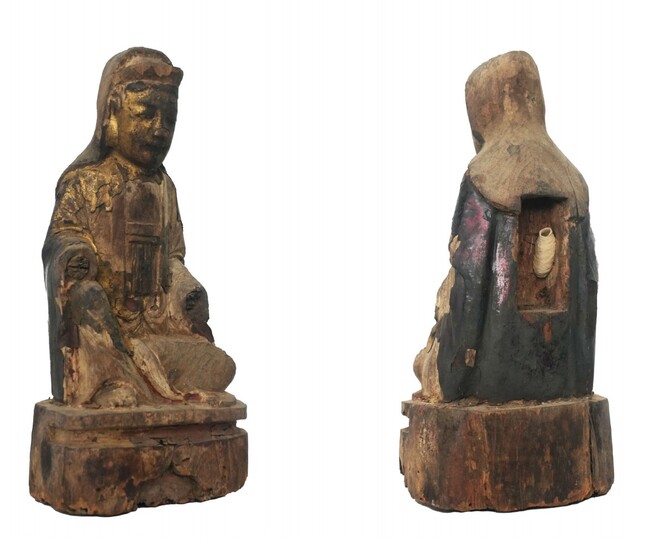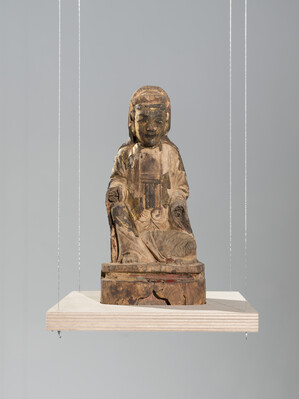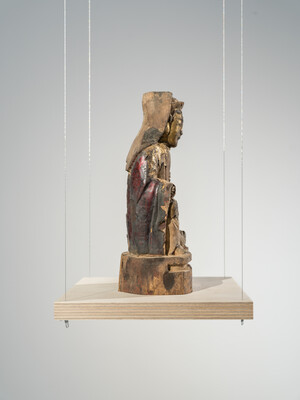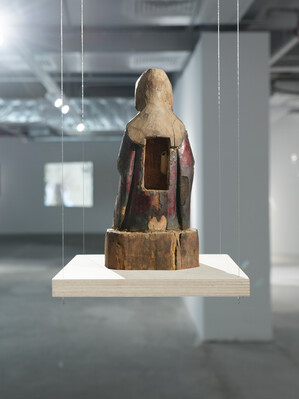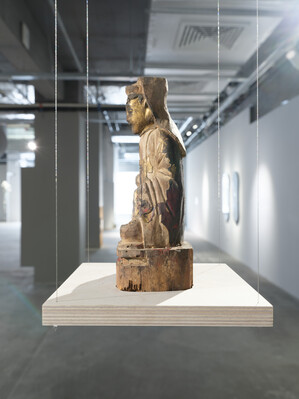This is a wooden statue of the Free (or Carefree) Guanyin from the Qing Dynasty, which I collected from the folk traditions of South China. For a long time, it had been forgotten in a corner—no longer intact, with its gilded lacquer surface largely peeled away.
Behind devotional statues, there is often a compartment used for "zhuangcang" (ritual cavity filling), a space where people imbue the sacred figure with faith and vows. I guided wild mud daubers to build a clay nest inside this cavity at the back of the statue. Inside, the offspring of these wasps would hatch, undergo metamorphosis, and eventually fly away.
"Zhuangcang" refers to the practice of filling Buddhist statues, stupas, or ritual objects with scriptures, mantras, sacred relics, medicinal herbs, precious items, etc., symbolizing the endowment of spiritual power and the condensation of blessings. This process signifies the "dwelling of the Dharma body," transforming the sacred object into a vessel of faith.
Detail pictures:

